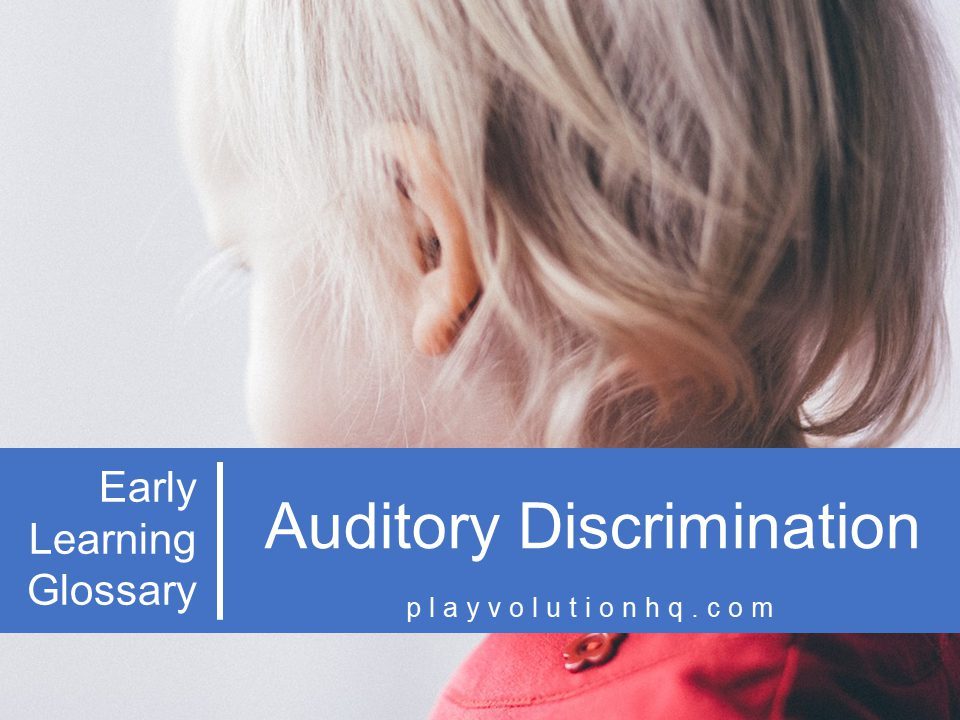
Auditory discrimination refers to the ability to hear and differentiate between various sounds, including those that are similar in pitch, tone, or pronunciation. It involves recognizing differences in spoken language, music, and environmental sounds. This skill enables children to understand and interpret the nuances of speech and is fundamental for language development.
For parents and early learning professionals, understanding auditory discrimination and its significance can greatly support children’s language development and overall learning.
The Significance Of Auditory Discrimination
Here are 5 developmental areas in which auditory discrimination plays an important role:
- Language Development
Auditory discrimination is the cornerstone of language acquisition. Children must be able to distinguish between sounds and phonemes to understand spoken language and eventually produce words and sentences themselves. - Reading Readiness
Proficiency in auditory discrimination is closely linked to reading readiness. Children who can identify and differentiate sounds are more likely to develop strong phonemic awareness, a crucial precursor to reading success. - Communication Skills
A well-developed auditory discrimination ability contributes to effective communication. Children with this skill can pick up on subtleties in conversation, such as tone of voice and intonation. - Social Interactions
The ability to recognize subtle differences in tone of voice and intonation is helpful in understanding others’ emotions and intentions. - Listening Comprehension
Auditory discrimination enhances listening comprehension, allowing children to follow instructions and absorb information.
Nurturing Auditory Discrimination
Supporting the development of auditory discrimination in a play-based environment is simple and rarely requires direct instruction. It’s something kids develop as they play, explore, and engage with the world. The general idea is to look at sounds as loose parts with which children can interact. Here are some examples:
- Exposure To Varied Environmental Sounds
Through the course of the day, children’s ears are awash in environmental sounds: the gurgle of water twisting down a drain, a barking dog, raindrops, music, the hum of a ceiling fan, conversation, and more. - Playing With Rhymes And Rhythms
Most children naturally start to notice rhymes and rhythms as they are exposed to conversation and music. Noticing–and playing with–these subtle differences in sound helps build their discrimination skills. - Listening To Stories
Regularly reading aloud to children and telling them stories, as well as discussing what they’ve heard, is a great way to expose them to the varied sounds and tones of language. - Music and Songs
Singing and listening to songs with repetitive lyrics and melodies can improve discrimination skills. - Time Outside
It turns out that time outside helps hone auditory discrimination skills. There are abundant environmental sounds outside, and they are ever-changing in the wide-open spaces. Imagine the rumble of a far-off train growing closer and closer and then fading into the distance. - Opportunities To Make Sound
Children should have ample opportunities to play at generating sound using things like their own voices, musical instruments, pots and pans, sticks and stones, sandpaper, broomsticks, coconut shells, and paperclips. Such play is rich in opportunities for practicing auditory discrimination.
Auditory Discrimination Wrap-Up
Auditory discrimination is a foundational skill that empowers children in their language development and communication. By understanding its significance and supporting opportunities to nurture this skill, parents and early learning professionals can support young learners in their journey toward effective listening, communication, and overall academic success. Adult support should focus on creating environments where children can play with sound, not on sit-down adult-driven lessons or practice sessions.
In addition to the above suggestions, informal conversations about listening and sounds are also beneficial. Answer their questions as best you can (‘I don’t know, let’s look it up’ is an acceptable answer if they stump you) and ask them questions you don’t already know the answer to.
Contribute content to Playvolution HQ
Brought to you by Explorations Early Learning
Thoughts On This Entry?
I’d love to hear your thoughts on improving this entry and suggestions for additional glossary additions in the comments below. You can also contact me with comments or concerns.
Browse Trainings
Post Author
Jeff Johnson is an early learning trainer, podcaster, and author who founded Explorations Early Learning, Playvolution HQ, and Play Haven.


Leave a Reply